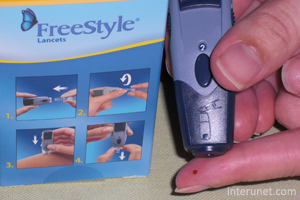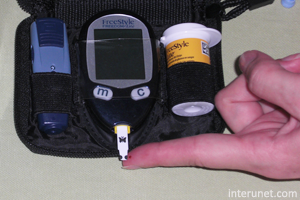 |
 |
Fortunately very small percentage of expecting mothers get gestational diabetes in the late pregnancy about 5-10%. There are even smaller percentages of those mothers who have to take pills or do insulin shots in order to lower their blood glucose levels. However, even in those patients diabetes might disappear following delivery.
Importance of understanding and accepting the fact that you got gestational diabetes
Normally it is very hard to distinguish whether you have diabetes or not because its symptoms very look like normal pregnancy condition. For example, if you have diabetes you are usually more tired, thirsty, and go to the bathroom often. However, those symptoms are almost the same as for a regular condition of a woman from conception until birth. You are tired because caring a baby will take lots of energy from your body. You will need more fluids during pregnancy than usual and if you drink more then, obviously, you will go to the bathroom more. That’s why many mothers refuse to believe that they could develop this disease just because they didn’t have it before. They don’t realize that by not accepting the truth and not dealing with the situation they might make thing worst not only for themselves but for their babies also.
Managing diabetes
If after the three hour test you were diagnosed with GDM then you will be send to see a diabetes educator in your hospital who will teach you how to use an electronic device called a glucose meter to monitor your blood glucose levels. He/she will show you first time how to use it from the beginning to the end.
At first your diabetes educator will explain you what diabetes is and which types exist. Then he/she and you will wash your hands thoroughly and dry them well. Then your educator unpacks the new device and read with you the instructions. After that your glucose meter will be tested in order to determine whether it works fine. Next step is to prick your finger with the needle (lancet) provided with your test kit. It is very important to prick only sides of your fingers because pricked tips will hurt more. In addition, an excessive blood might come out which you don’t need as much.
Next step is to touch the test strip to the blood and wait for a few seconds after what your meter will display your blood glucose level on a screen. You shouldn’t be surprised that your glucose level fluctuates throughout the day. However, your blood sugar not supposed to be lower than 60. Glucose is usually lowest in the morning and should be less than 90. Then it usually rises after meals for an hour or two, but not supposed to go higher than 120. Therefore, it is very important not let your blood sugar level go over the limit.
Unless your doctor or midwife has instructed you otherwise, you will be expected to test your blood glucose 4 times a day:
- before each breakfast (before you eat or drink anything),
- two hours after each breakfast,
- two hours after each lunch,
- two hours after each dinner. For example, if you finish your lunch at 12:30 p.m.; you should test your blood sugar at 2:30 p.m. Patients cannot eat or drink sweet beverages including juice in between meals and the blood sugar tests. However, after the test you can have some small snack if you want to.
Also you will have to see a nutritionist who will teach you what to eat and how much. You will be taught how to calculate carbohydrates and read label on foods. You will be surprised that you can actually eat even cakes while you have gestational diabetes, but in a very small portions and not often. Recommendations will be also given to you how to make specific dietary changes and get regular exercise. The importance of drinking lots of water will be emphasized to you as well.
Medical Disclaimer
The author is not a doctor and the information in the article is general in nature with no medical advises given or imply. Talk to your doctor, nurse or medical advisor how to treat health related problems.
